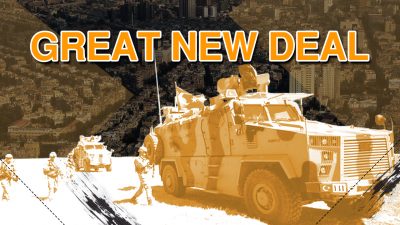Video: Turkish Offensive in Northern Syria Pushed Kurds into Hands of Assad and Moscow. War Report

The defense of the Kurdish-led Syrian Democratic Forces (SDF) is steadily collapsing under pressure from the Turkish Armed Forces and Turkish-backed militant groups, branded as the National Syrian Army.
Since the start of Operation Peace Spring, Turkey-led forces have captured 42 settlements from the SDF. Most of them were abandoned by Kurdish fighters after a series of artillery and air strikes by the Turkish military. The most intense clashes took place in the towns of Ras al-Ayn and Tell Abyad, and on the chunk of the M4 highway between Aywah and Sahi Ruwaydat.
Turkish forces started a storm of Ras al-Ayn in the evening of October 11. On October 12, the Turkish Defense Ministry announced that its forces got a full control of the town. On the same day, a powerful SDF counterattack forces Turkish-backed militants to withdraw to the southern part of Ras al-Ayn. On October 13, an intense fighting there continued, with the town remaining contested. By October 14, Turkey-led forces had established control of most of it.
Another area of heavy clashes was Tell Abyad. The Turkish military and the NSA advanced on the town of October 12 and captured its center on October 13. The success in the area was predetermined by previous advances of Turkey-led forces that besieged the town from the eastern and western directions.
On October 12 and 13, forward units of the NSA were working to cut off the M4 highway stretching along the Syrian-Turkish border. According to photos and videos released online, when Turkish-backed militants first reached the highway they captured and executed a number of civilians, including Hevrin Khalaf, the head of the SDF-linked political party – the Future Syria Party. The SDF tried to push Turkish-backed forces back, but failed to do so.
The shape of the current Turkish military efforts demonstrate that at the first phase of the advance Ankara seeks to capture the border area between Ras al-Ayn and Tell Abyad, and reach the M4. After this, they will likely push towards Kobani and Manbij.
The Turkish Armed Forces already deployed Leopard 2A4 battle tanks on the eastern bank of the Euphrates and floating bridge equipment near the Sajur river, north of Manbij.
According to Ankara, about 500 members of Kurdish armed groups have been neutralized since the start of the operation. At the same time, Turkish sources admit that 6 Turkish soldiers and up to 2 dozens NSA members were killed. Pro-SDF media outlets report about tens destroyed Turkish armored vehicles and dozens of surrendered NSA members. Proofs are barely provided by both sides.
785 ISIS-linked persons fled the SDF-run Ain Issa camp after SDF members had withdrawn from the area. The SDF accused Turkey for the incident and claimed that the prisoners fled thanks to help from ‘Turkish mercenaries’. Meanwhile, Ankara already declared that it’s ready to take responsibility for detention centers with ISIS members and their relatives in northeastern Syria after it takes control of them.
Washington is not going to assist the SDF in repelling the Turkish offensive despite SDF loud statements about their role in the war on ISIS and the US strategy in the region. Defense Secretary Mark Esper told CBS News on October 13 that the US is “preparing to evacuate” about 1,000 troops from northern Syria “as safely and quickly as possible”. The withdrawal of US troops is another sign that the Turkish operation against the SDF was in fact coordinated with and approved by the Trump administration.
The last chance of the SDF to keep control of their remaining areas along the Syrian-Turkish border is to get help from the Syrian Army and Russia. If this is not done anytime soon, the real SDF resistance to the Turkish advance will likely remain only in the few Kurdish-populated areas of northeastern Syria.
On October 13 evening, the SDF announced that it had reached an agreement with the Assad government, and the Syrian Army will enter a large part of its areas, including Manbij and Kobani, and help the Kurdish-led group to limit the further offensive of Turkish forces. The implementation of this agreement may become a turning point in relations between Damascus and the SDF.
*
Note to readers: please click the share buttons above or below. Forward this article to your email lists. Crosspost on your blog site, internet forums. etc.


